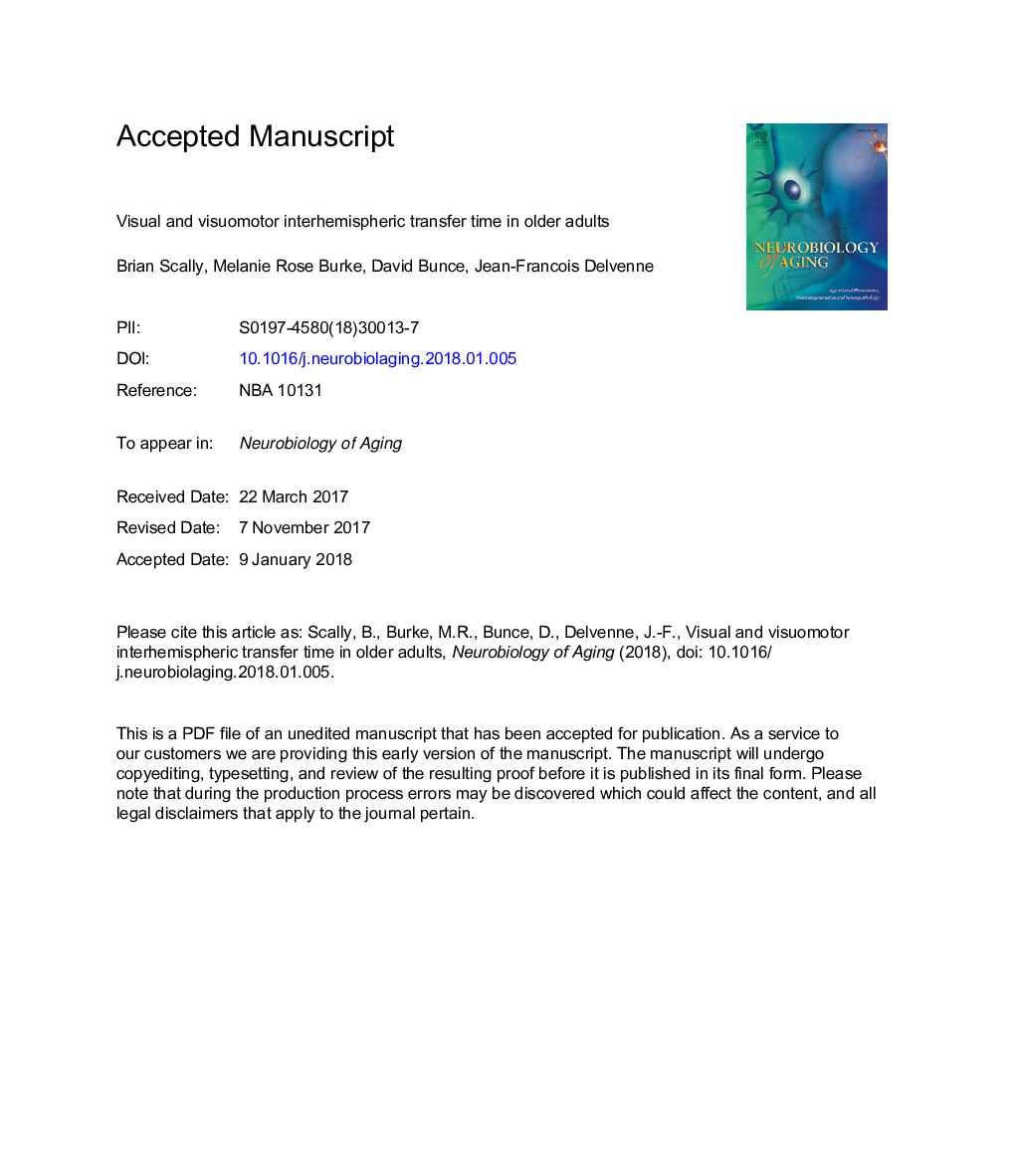| Article ID | Journal | Published Year | Pages | File Type |
|---|---|---|---|---|
| 6802970 | Neurobiology of Aging | 2018 | 38 Pages |
Abstract
Older adults typically experience reductions in the structural integrity of the anterior channels of the corpus callosum. Despite preserved structural integrity in central and posterior channels, many studies have reported that interhemispheric transfer, a function attributed to these regions, is detrimentally affected by aging. In this study, we use a constrained event-related potential analysis in the theta and alpha frequency bands to determine whether interhemispheric transfer is affected in older adults. The crossed-uncrossed difference and lateralized visual evoked potentials were used to assess interhemispheric transfer in young (18-27) and older adults (63-80). We observed no differences in the crossed-uncrossed difference measure between young and older groups. Older adults appeared to have elongated transfer in the theta band potentials, but this effect was driven by shortened contralateral peak latencies, rather than delayed ipsilateral latencies. In the alpha band, there was a trend toward quicker transfer in older adults. We conclude that older adults do not experience elongated interhemispheric transfer in the visuomotor or visual domains and that these functions are likely attributed to posterior sections of the corpus callosum, which are unaffected by aging.
Related Topics
Life Sciences
Biochemistry, Genetics and Molecular Biology
Ageing
Authors
Brian Scally, Melanie Rose Burke, David Bunce, Jean-Francois Delvenne,
